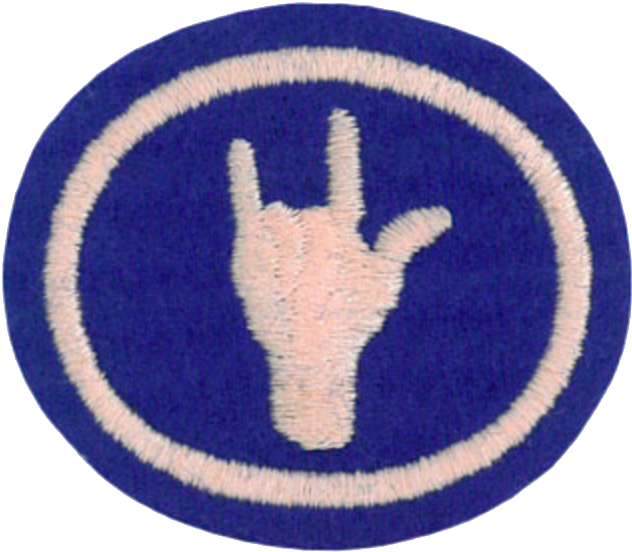Difference between revisions of "AY Honors/Sign Language/Answer Key/es"
From Pathfinder Wiki
< AY Honors | Sign LanguageAY Honors/Sign Language/Answer Key/es
(Created page with "{{clear}}") |
|||
| (8 intermediate revisions by the same user not shown) | |||
| Line 38: | Line 38: | ||
{{ansreq|page={{#titleparts:{{PAGENAME}}|2|1}}|num=2}} | {{ansreq|page={{#titleparts:{{PAGENAME}}|2|1}}|num=2}} | ||
<noinclude></noinclude> | <noinclude></noinclude> | ||
| − | <!-- 2. | + | <!-- 2. Tener un mínimo de tres horas de instrucción en lenguaje de señas. --> |
| − | |||
{{clear}} | {{clear}} | ||
| Line 49: | Line 48: | ||
{{ansreq|page={{#titleparts:{{PAGENAME}}|2|1}}|num=3}} | {{ansreq|page={{#titleparts:{{PAGENAME}}|2|1}}|num=3}} | ||
<noinclude></noinclude> | <noinclude></noinclude> | ||
| − | <!-- 3. | + | <!-- 3. Enviar y recibir letras con señas con la mano, a razón de cinco palabras por minuto utilizando un mínimo de 25 letras. --> |
| − | |||
| − | |||
{{clear}} | {{clear}} | ||
| Line 75: | Line 72: | ||
{{ansreq|page={{#titleparts:{{PAGENAME}}|2|1}}|num=4}} | {{ansreq|page={{#titleparts:{{PAGENAME}}|2|1}}|num=4}} | ||
<noinclude></noinclude> | <noinclude></noinclude> | ||
| − | <!-- 4. | + | <!-- 4. Aprender por lo menos 100 señales de uno o varios libros de referencia del lenguaje de señas. --> |
| − | |||
{{clear}} | {{clear}} | ||
| Line 82: | Line 78: | ||
{{clear}} | {{clear}} | ||
| − | + | {{clear}} | |
| − | + | {{clear}} | |
| − | + | {{clear}} | |
| − | + | {{clear}} | |
| − | + | {{clear}} | |
| − | + | {{clear}} | |
<noinclude></noinclude> | <noinclude></noinclude> | ||
| Line 98: | Line 94: | ||
{{ansreq|page={{#titleparts:{{PAGENAME}}|2|1}}|num=5}} | {{ansreq|page={{#titleparts:{{PAGENAME}}|2|1}}|num=5}} | ||
<noinclude></noinclude> | <noinclude></noinclude> | ||
| − | <!-- 5. | + | <!-- 5. Aprender y presentar en el lenguaje de señas (no letra por letra) al menos dos canciones sencillas. --> |
| − | |||
| − | |||
| − | |||
| − | |||
| − | |||
| − | {{ | + | {{clear}} |
| − | + | {{clear}} | |
| − | |||
<noinclude></noinclude> | <noinclude></noinclude> | ||
| Line 114: | Line 104: | ||
{{ansreq|page={{#titleparts:{{PAGENAME}}|2|1}}|num=6}} | {{ansreq|page={{#titleparts:{{PAGENAME}}|2|1}}|num=6}} | ||
<noinclude></noinclude> | <noinclude></noinclude> | ||
| − | <!-- 6. | + | <!-- 6. Realizar una de las siguientes actividades: --> |
<noinclude></noinclude> | <noinclude></noinclude> | ||
{{ansreq|page={{#titleparts:{{PAGENAME}}|2|1}}|num=6a}} | {{ansreq|page={{#titleparts:{{PAGENAME}}|2|1}}|num=6a}} | ||
<noinclude></noinclude> | <noinclude></noinclude> | ||
| − | |||
<noinclude></noinclude> | <noinclude></noinclude> | ||
| Line 124: | Line 113: | ||
{{ansreq|page={{#titleparts:{{PAGENAME}}|2|1}}|num=6b}} <!--T:43--> | {{ansreq|page={{#titleparts:{{PAGENAME}}|2|1}}|num=6b}} <!--T:43--> | ||
<noinclude></noinclude> | <noinclude></noinclude> | ||
| − | |||
<noinclude></noinclude> | <noinclude></noinclude> | ||
| Line 130: | Line 118: | ||
{{CloseReq}} <!-- 6 --> | {{CloseReq}} <!-- 6 --> | ||
<noinclude></noinclude> | <noinclude></noinclude> | ||
| − | == | + | ==Referencias== |
| − | |||
| − | |||
| − | |||
| − | |||
| − | |||
<noinclude></noinclude> | <noinclude></noinclude> | ||
{{CloseHonorPage}} | {{CloseHonorPage}} | ||
Latest revision as of 00:34, 15 July 2022
Lenguaje de signos
Nivel de destreza
1
Año
1978
Version
18.12.2025
Autoridad de aprobación
Asociación General
1
Aprender el alfabeto manual utilizado por los sordos.
2
Tener un mínimo de tres horas de instrucción en lenguaje de signos.
3
Enviar y recibir letras con señas con la mano, a razón de cinco palabras por minuto utilizando un mínimo de 25 letras.
4
Aprender por lo menos 100 señales de uno o varios libros de referencia del lenguaje de signos.
5
Aprender y presentar en el lenguaje de señas (no letra por letra) al menos dos canciones sencillas.
6
Realizar una de las siguientes actividades:
6a
Explicar la diferencia entre Ameslan (American Sign Language) y el lenguaje de signos en inglés (signed English) y demostrar el use de ambos.
6b
Leer y dar una exposición oral o por escrito sobre una escuela en su país o estado que se especializa en la educación de los sordos.


